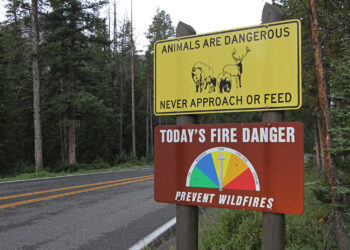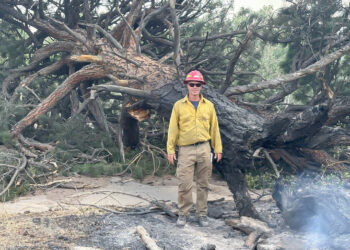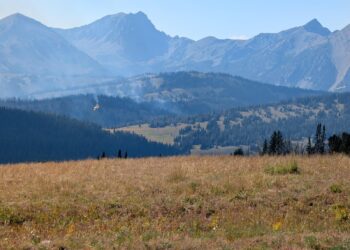Free event on Aug. 29 will inform homeowners on best practices for wildfire preparation
EBS STAFF
Advanced planning, understanding and prevention are three primary factors to reduce wildfire impacts, according to the Big Sky Fire Department.
To continue educating local homeowners in Big Sky’s predominant wildland-urban interface, the fire department and Fire Adapted Big Sky are hosting a free, public workshop on Tuesday, Aug. 29 from 4 to 6 p.m. at BASE. The “home hardening” workshop will offer tips for property owners to adapt their homes to a climate at “very high risk of wildfire—higher than 93% of communities in the U.S.,” according to Fire Adapted Big Sky.
Fire Adapted Big Sky is a collaborative effort led by representatives from Grow Wild, Gallatin River Task Force, Lone Mountain Land Company, Yellowstone Club, Big Sky Owners Association, and others.
The Fire Adapted Big Sky Wildfire Hub is packed with information including heat maps, fire risk and air quality index updates, current weather conditions, evacuation plans, an interactive parcel risk potential map and a homeowner guide to fire adaptation.
Mike Ketschek, community risk reduction coordinator with the Big Sky Fire Department, said the presentation will be led by Deputy Chief Dustin Tetrault, who is certified as a wildfire mitigation specialist from the National Fire Protection Agency.
“Most of the residents in Big Sky are in a high-hazard wildfire risk zone. The presentation will show them how they can either build or retrofit their homes to be safer, and improve their landscaping to reduce wildfire risk,” Ketschek told EBS.
Anyone unable to attend the workshop can find more information at the Big Sky Fire Department website.
“For emerging incidents, current events, and fire restrictions please visit our Facebook page @BigSkyFireDepartment,” BSFD’s website states.
In June, BSFD released a new wildfire action guide. The short flipbook contains recommendations to help plan for and prevent wildfires, and to prepare for wildfires which are always expected in this “very high risk” region.














